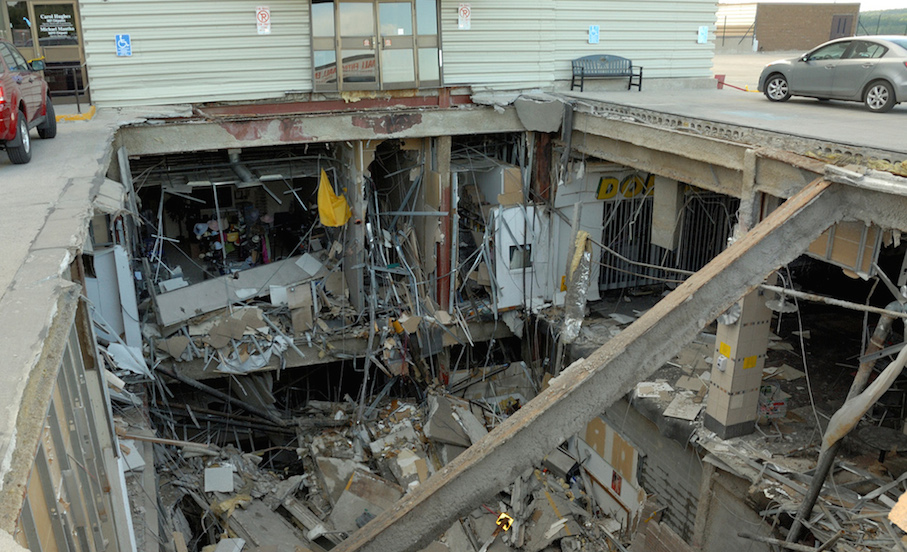As the trial of a former Canadian engineer gets under way this month for his role in a deadly 2012 garage collapse in Ontario, engineers' groups are pushing to boost professional licensing changes in the province and beyond.
A task force formed by Professional Engineers Ontario (PEO), the provincial licensing body for engineering practice, is moving to launch what could become an eventual system of mandatory continuing education.
The move comes as the trial started in early September in the Superior Court of Justice in Sault Ste. Marie, Ont., of now unlicensed engineer Robert Wood, who was the last to inspect the Elliot Lake rooftop mall parking garage before it collapsed, killing two women and injuring 19 others.
Wood, who lost his engineering license after the collapse in an unrelated issue, had been president of of M.R. Wright & Associates Inc., based in Sault St. Marie. The firm is now defunct.
Wood has pleaded not guilty to two counts of criminal negligence causing death and one count of causing bodily injury.
PEO's Continuing Professional Competence Program (CP)2 Task Force will propose in November to the organization’s governing board to survey its 80,000 members to determine how many hours per year they are currently spending on continuing education.
The task force contends such research is a necessary step for PEO to determine whether to institute a system of compulsory continuing ed, according to PEO Registrar Gerard McDonald.
McDonald also will present upcoming recommendations to Engineers Canada, the national umbrella organization for provincial licensing bodies such as PEO.
“As engineers, we have an ethical duty to the people of this province to ensure that whatever work we are doing is above reproach,” McDonald said.
Under the proposal, licensed engineers would start to fill out profile information starting in 2017.
This would include an “online practice evaluation questionnaire and ethics module,” according to Engineering Dimensions, PEO’s magazine. Engineers would also be asked to list how many hours of “professional development activity” they engage in each year.
PEO will use survey results to determine how many hours of continuing education each engineer should take during a given year.
The organization will also look at other factors, such as particular disciplines and, crucially, whether an engineer works alone or with colleagues and has someone reviewing his or her work.
A sole practitioner would be considered as having a greater degree of risk, McDonald said.
PEO doesn’t plan to offer continuing education courses directly, with options at local universities as well as through the Ontario Society of Professional Engineers, he added.
Engineers would be asked to fill out the review on an annual basis at the time of license renewal. If not enough members respond, PEO would “look at ways to get greater responses.”
However, provincial officials would still have to pass new legislation granting PEO additional authority before the organization could launch a compulsory system of continuing education, he said.
As a result, repercussions for members who don’t participate for now will be limited. If an engineer faces disciplinary charges, the amount of ongoing professional education, or lack thereof, could be cited in the proceedings, McDonald said.
An engineer’s level of ongoing continuing education will also be listed in his or her profile in PEO's planned first online directory of members.
Any disciplinary actions would also be listed, although this is typically a small subset of members, he noted.
PEO professional standards committee is also weighing recommendations that would improve regulations regarding structural inspections. The proposal should be complete by year end and would have to be incorporated into the province’s building code to take effect, McDonald said.
But it’s not clear whether any of the proposals would have prevented the tragic collapse of the parking garage at the Elliot Lake Mall.
McDonald noted that one of the overarching findings of a 2014 report into the disaster led by provincial Justice Paul Belanger was that a large number of people connected to the mall over the years ignored rules already on the books in not flagging problems with the garage.
Belanger had harsh words for Wood, who performed the last inspection before the garage collapse, calling his work “markedly inferior.”
But Belanger also found that municipal officials, the mall owner and others had ignored the rooftop garage’s decrepit condition. Cars and concrete crashed through the garage roof and into the mall after rusty ceiling beams finally gave in after years of erosion from water and salt.
“We have been working fairly hard on this,” PEO’s McDonald said of the new recommendations. “It is incumbent upon us to learn and improve whenever you have a tragedy like this.”






Post a comment to this article
Report Abusive Comment